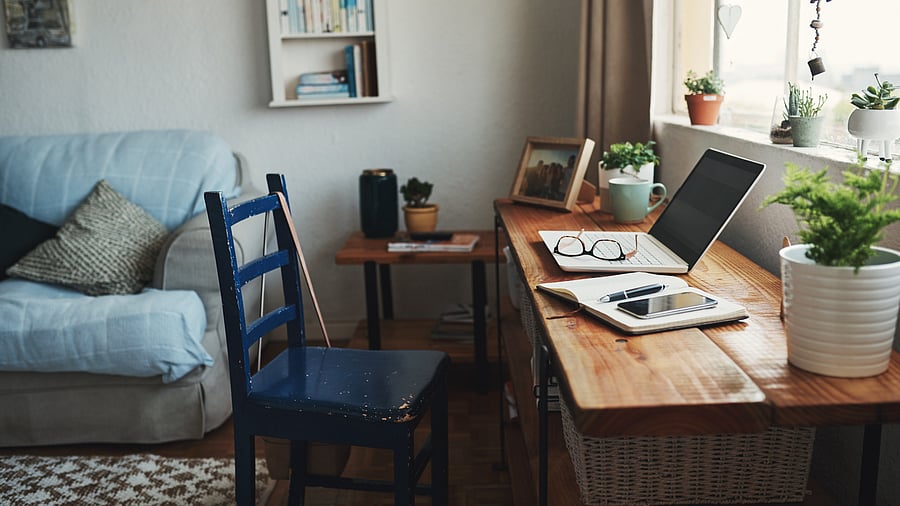
A work desk at home should offer ample storage space to avoid a cramped look.
Credit: iStock Photo
An ergonomically designed work desk is conducive to productivity. Here are some factors to keep in mind while shopping for one.
Right posture
Don’t buy the first good-looking desk you see. Ensure its height aligns with your body. That is, when you type on the keyboard, your arms and hands should be parallel to the floor. “When you are sitting, your feet should be flat and your legs should fit snugly under the desk,” adds Sumitra K P, a Mangaluru-based interior designer.
Choose a standing desk or a sit-down table with adjustable legs. “Maintaining correct posture is key to eliminating any discomfort. Choose a table with a height-adjustable keyboard tray and also a footrest,” she adds.
Room size
Your work desk must also align with your room’s dimensions. Kartik Agarkar, an interior designer-architect from Pune, says, “If you have a large room that can be converted into an office space, choose a table with multiple shelves.” Or, if you have to set up your study in a nook, go for a corner desk that allows you to tuck in a chair. “Such a set-up will look discreet and functional,” he explains.
A long table with storage is ideal if you require stationery, files, cables, smaller gadgets, and multiple computer monitors at arm’s reach. “IT professionals, designers, artists, architects, and photographers need easy access to gear,” he adds.
For writers, medium to small tables that can accommodate a computer or a laptop and a few stationery items will suffice.
Position your desk against the light source in the room but also ensure your work area is sufficiently lit. Working while facing the light source will strain your eyes, he warns.
Material matters
A table made of hardwood is ideal for an office space, especially if it needs to hold many items. “Tables made from rosewood, oak, teak or sheesham wood are expensive but worth the investment as they last long and are more sturdy,” Agarkar adds.
He notes that softwoods like the pine and birch are cheaper but less durable — they absorb stains easily and get dents faster.
Check for storage
It’s also important to check if your work desk
has an ample number of shelves and cabinets and if it offers flexibility to expand or customise the storage. Also check if it has in-built tabs and panels to hide cables strategically.
“If such features do not exist, you can create holes to organise the wiring to avoid a cluttered look,” adds Sumitra.
Colour choices
A work desk made of hardwood in brown and mahogany or dark shades is a popular choice.
“Glass-topped desks look trendy and go well with most wall colours. But they are prone to scratches and gathering dust, and hence, difficult to maintain. On the contrary, metal desks with coloured tops are long-lasting,” says Sumitra.
Her suggestion: stick to taupe, black, greys and browns when considering a work table. If your room has beige or off-white walls, you can opt for a white or light-coloured desk.
